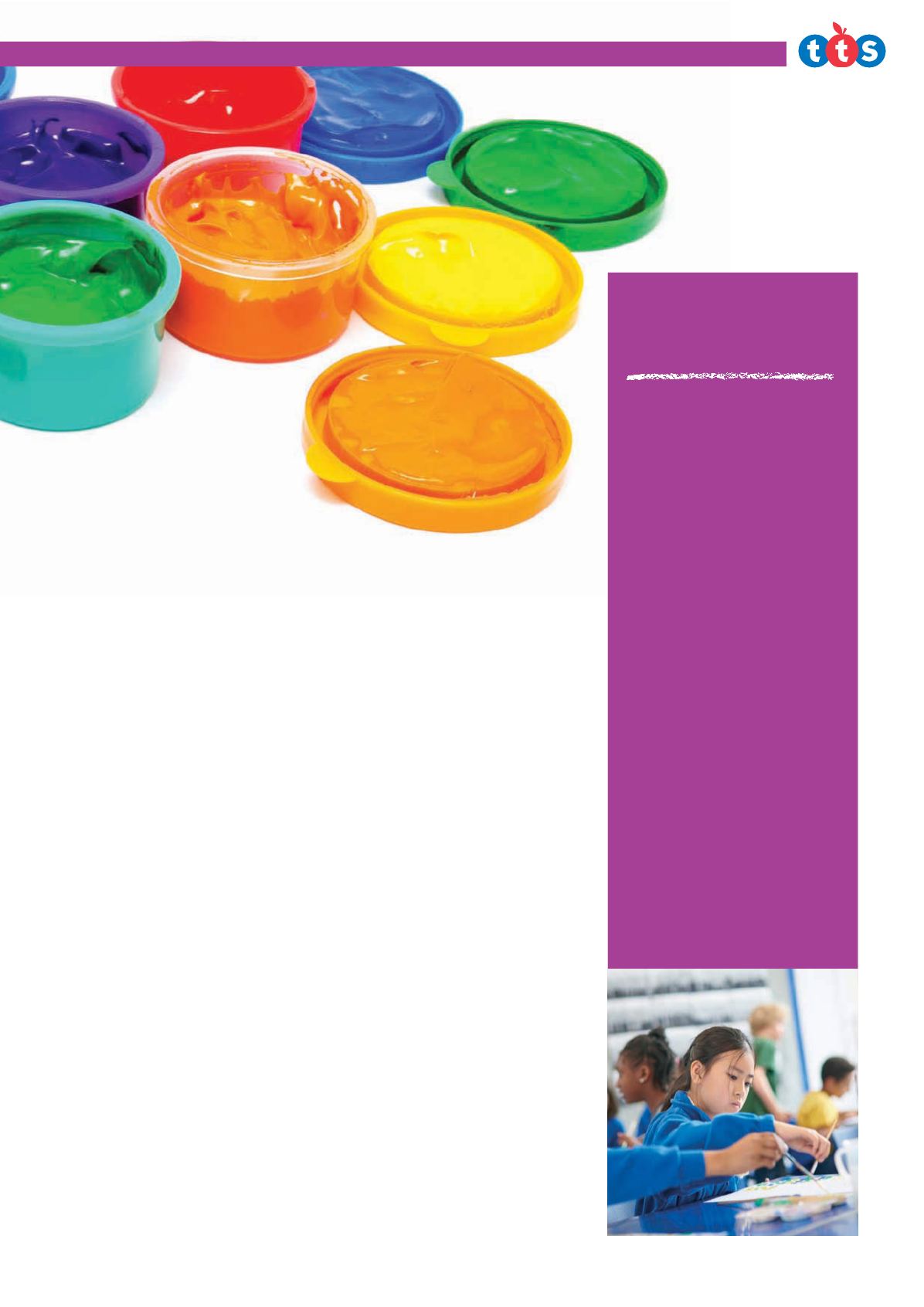
to redraft or edit. It had to be carefully
rehearsed in their heads before it went on
paper. That is one of the great advantages
of painting andwriting together. When the
ideas dry up for amoment, or you need to
think things through for a bit, then you put
down your pen and pick up your pencil or
paintbrush again. Each helps the other.
Thiswas especially true for thosewho
struggled aswriters initially, but could
drawand paint well. The fact that theywere
able to produce one thing to a high standard
seemed to convince themsubliminally that
they could the other aswell.
Fromthat small beginning they started to
develop their own voices aswriters and also
towrite at greater length, quickly graduating
toA3 sheets. Improvementswere rapid and
striking. They began to discuss the best
words to use to bring out a particular shade
ofmeaning and comment critically on each
other’swork. They had started the journey to
becoming authors.
Strand3
PERFECTING PENMANSHIP
The third strandwas a heavily structured
emphasis on handwriting. As a school, we
took the decision to teach an italic style,
which they learned quickly and used for their
‘best’ handwriting. It swiftly revolutionised
theway that children regarded their work.
They took immense pride in it, so that their
handwritingmatured in style and legibility
and, together with the amazingwatercolour
illustrations and their renewed skill as
authors, their achievements and attitudes
to learning in general were transformed.
TEACH READING & WRITING
65
ONLYTHE
BEST ISGOOD
ENOUGH
THESECRETTOGREATWRITING?
QUALITYINALLTHINGS...
■
Make sure that everything you put
in front of children is of real quality:
whether it’s paper, paints, brushes,
pens or examples of work. It all needs
to add to the message that only the
best is good enough.
■
Immerse children in language from
a range of genres that will interest,
excite and entertain. Help them to
become connoisseurs of English.
■
Make learning as real as you
possibly can. Involve children in
making decisions about what they
would like to learn and how to
learn it.
■
Give children time to do things
really well. It can take a while to
achieve something of real substance,
but the effort and the time invested
yields benefits, both in their levels
of engagement, but also in their
attitudes to learning.
■
While editing and redrafting had no
place when producing this ‘best’ work,
there were also times when children
were taught how to spell accurately
and to master key grammar skills.
Handwriting was always taught in
a very focused way. Indeed, these
aspects became easier to teach,
as children knew they were being
equipped with new skills to enhance
their craft.
For thefirst writing activity, we
went onto the school field on awarm
September day. Each child found a place
where he or she could be completely alone
and just sit still and experience being ‘in the
moment’. Childrenwere encouraged to listen,
smell, touch and feel. I asked themto capture
thatmoment in time, writing down some
thoughts, feelings and experiences on a
pad of paper. They had 20minutes. It was
too short for some pupils, who loved this
quiet, sensory experience; however, it was
long enough for others to become bored.
I also asked children to bring one thing back
that would remind themof that 20minutes.
Some chose aflower or branch, others a
stone, still others a sweet wrapper, lost toy
or piece of litter.
Once back in class, they started towrite
what they had experienced during that time
on thefield on a plain A4 sheet of paper. They
also had to include awatercolour illustration
of the object they brought back. The children
could combine the two in anyway they liked,
and it was their choice as towhether to begin
with thewriting or artwork. For those children
for whomdrawing and paintingwas a
challenge, I told themtofind something they
felt confident painting – a leaf, a small petal, a
twig, a pumpkin stalk – “Keep it as simple as it
needs to be for you to be able
to succeed,” was themantra.
I reminded them, as so often I didwhen
teachingwriting, that this piece of white
paper in front of themwasmagical. It would
contain ideas, thoughts and stories that
would never be captured unless theywrote
them. And because theywere putting these
marks on a piece of paper today, their
children, grandchildren and peoplewho live
hundreds of years fromnowwould be able
to read and knowexactlywhat theywere
thinking today. Magical!
They also knew they had to get it right
first time, as theyweren’t going to be able
In association with


